
See Figures 1, 2, 3, 4, 5 and 6
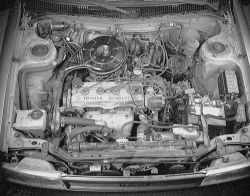
 |  |
Fig. Fig. 1: Mantenance Component Locations
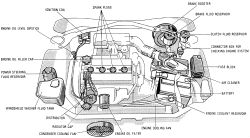
 |  |
Fig. Fig. 2: View of the engine compartment maintenance components-4A-GE
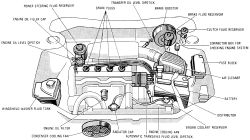
 |  |
Fig. Fig. 3: View of the engine compartment maintenance components-1988-92 4A-FE
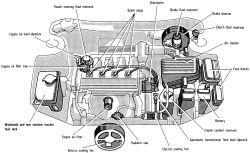
 |  |
Fig. Fig. 4: View of the engine compartment maintenance components-1993-95 4A-FE and 7A-FE
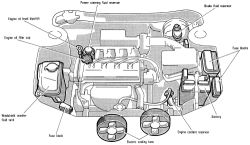
 |  |
Fig. Fig. 5: View of the engine compartment maintenance components-1996-97 4A-FE
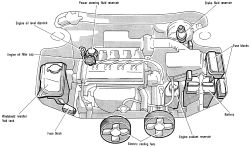
 |  |
Fig. Fig. 6: View of the engine compartment maintenance components-1996-97 7A-FE
Proper maintenance and tune-up is the key to long and trouble-free vehicle life, and the work can yield its own rewards. Studies have shown that a properly tuned and maintained vehicle can achieve better gas mileage than an out-of-tune vehicle. As a conscientious owner and driver, set aside a Saturday morning, say once a month, to check or replace items which could cause major problems later. Keep your own personal log to jot down which services you performed, how much the parts cost you, the date, and the exact odometer reading at the time. Keep all receipts for such items as engine oil and filters, so that they may be referred to in case of related problems or to determine operating expenses. As a do-it-yourselfer, these receipts are the only proof you have that the required maintenance was performed. In the event of a warranty problem, these receipts will be invaluable.
The literature provided with your vehicle when it was originally delivered includes the factory recommended maintenance schedule. If you no longer have this literature, replacement copies are usually available from the dealer. A maintenance schedule is provided later in this section, in case you do not have the factory literature.
These checks and inspections can be done either by yourself a reputable shop, or the Toyota dealer.
Here are a few of the scheduled maintenance items that need to be checked frequently:
OUTSIDE THE VEHICLEINSIDE THE VEHICLE
IN THE ENGINE COMPARTMENT
Along with these maintenance items, a tune-up is also part of this. A tune-up is not what it used to be years ago where you need to replace the spark plugs every 7500 miles (12,000 km). These days you can replace the plugs on some vehicles every 48,000 miles (77,000 km) or even 100,000 miles (160,900 km).